With a few simple ingredients, you can create a homemade eye shadow with personalized colors for a beautiful, eco-friendly makeup option. Learn how to customize and control the ingredients to find the perfect shade just for you!
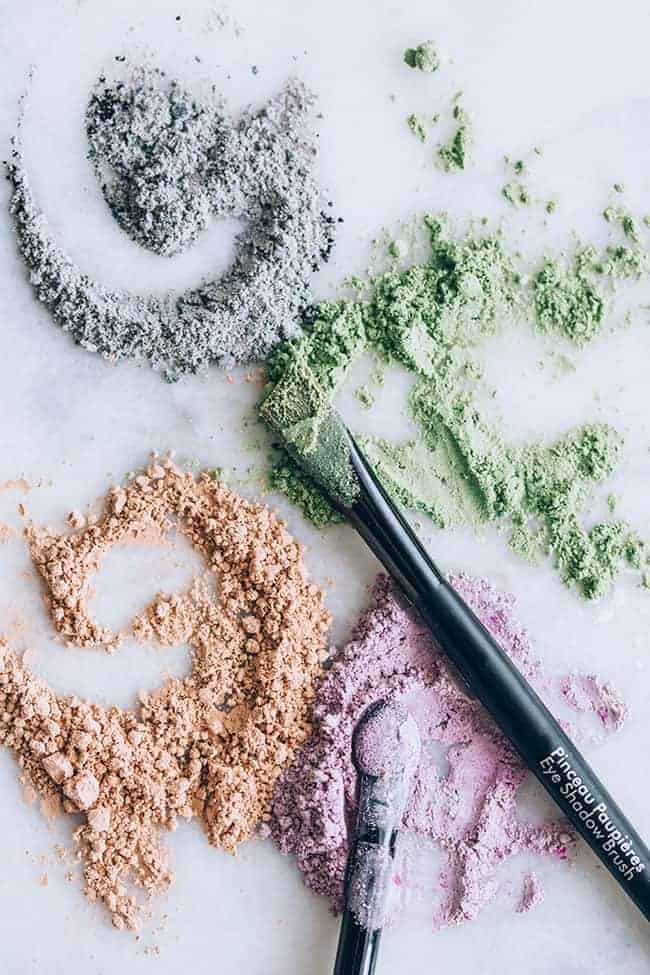
I'm a big fan of the natural look because, on most days, I only wear mascara and lipstick. There are so many ingredients that could be harmful; who can keep up with it all?
But when people say makeup is fun, this is what I assume they mean. While I may not apply it like an expert, mixing and matching colors to make my own eye shadow shade is so creatively satisfying. Plus, I'd add shimmer to just about every DIY project if I could!
Jump to:
Ingredients
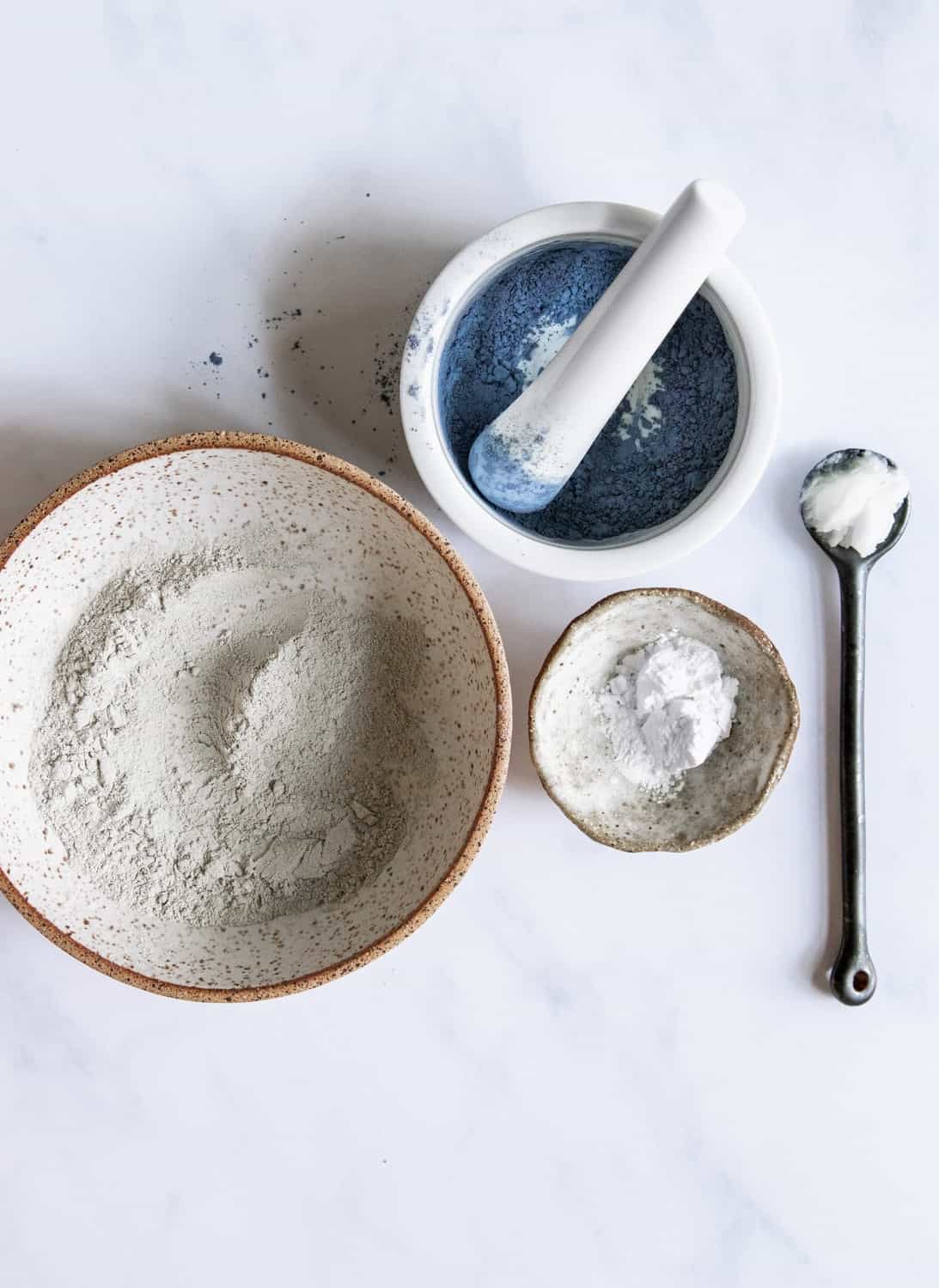
Bentonite clay — Truly, the most beautiful feature of this wonderfully simple eye shadow recipe is the healing bentonite clay. While it clearly isn't the star ingredient of your typical mineral makeup, this unassuming volcanic ash clay powder is well known for its ability to draw out and absorb toxins. Plus, it's antimicrobial and contains minerals such as magnesium, potassium, and calcium [source].
Because of these natural properties, bentonite clay is commonly used both internally and externally for detoxification and healing [source]. It's also used topically to help remove excess oils and debris from the skin.
Even though it hardens when it dries, bentonite clay is soothing and calming to the skin. And the additional mineral content it has to offer makes it a perfect starting place for homemade eye shadow.
Arrowroot starch — Like bentonite clay, arrowroot starch acts as a base for your eye shadow. It gives the powder a smooth texture, helps absorb excess oils on the skin, and contributes to the blending and adhesion of the color so it stays in place.
Almond oil — The oil acts as a binder so that the pigment better adheres to the skin. Almond oil is gentle, lightweight, and easily absorbed, and its moisturizing properties help the shadow go on smoother and blend easier. Plus, it helps nourish the delicate skin around the eyes, leaving it soft and hydrated.
Natural colors — Natural pigments, such as mica, iron oxides, and titanium dioxide, provide vibrant colors without the use of synthetic dyes. Spices like turmeric or cocoa powder can add warm tones and earthy hues to your eye shadow creations.
Botanical ingredients, like finely ground lavender, matcha powder, and butterfly pea powder, can infuse your eye shadows with vibrant color, soothing aromas, and potential skincare benefits.
See the recipe card below for quantities.
Instructions
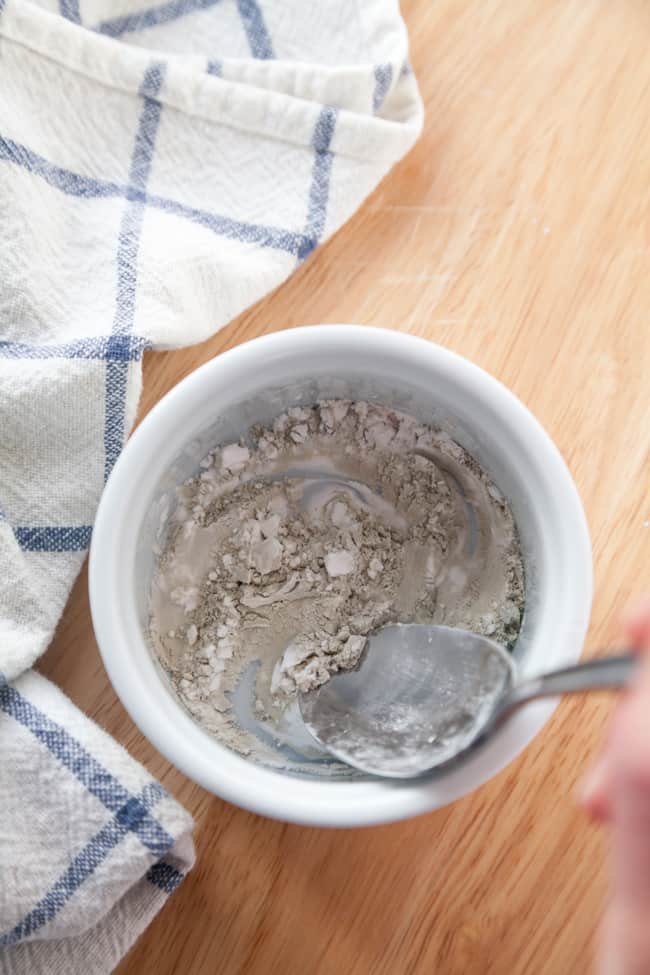
Begin by mixing the arrowroot starch and bentonite clay to create your eye shadow base.
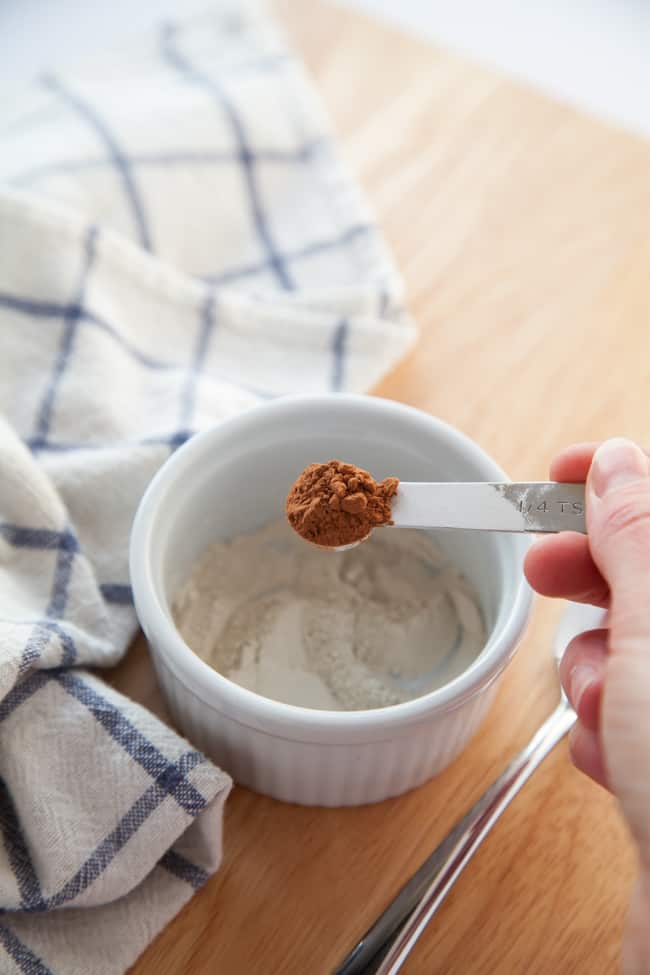
Now the fun part—adding your colors! Gradually add the powdered pigments, starting with ¼ or even ⅛ teaspoon. Mix well to incorporate the pigments evenly.

When you have your ideal shade, add a few drops of almond oil to the powder. Mash and mix the drops of oil into the mixture until they are completely combined.
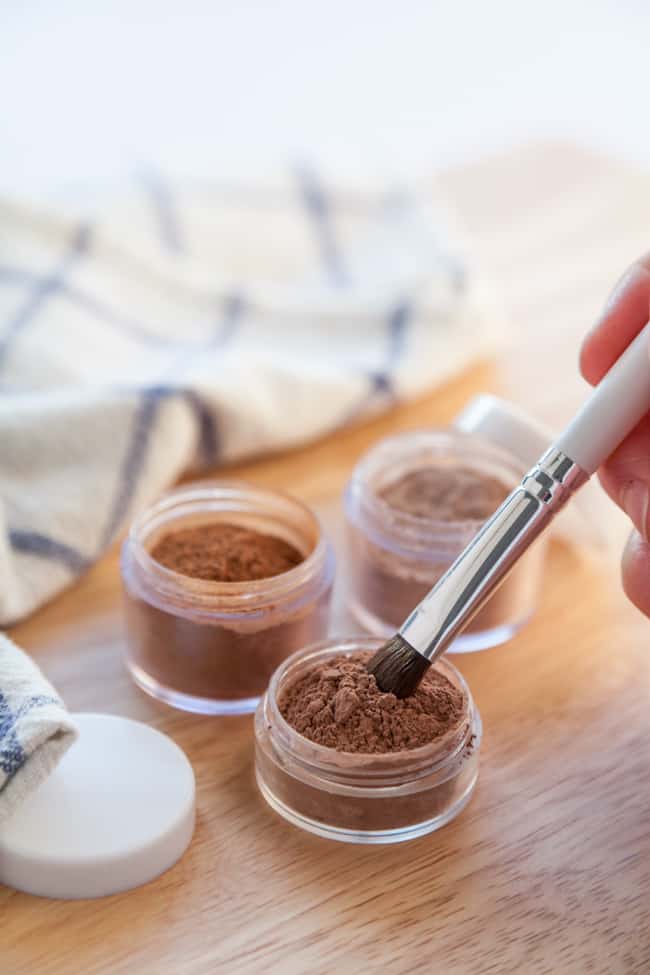
Transfer the mixture to a clean, airtight container or an empty eye shadow jar with a lid.
Hint: The more base ingredients you use, the lighter your eye shadow shade will be. So start with a small amount and add more clay/arrowroot as you go to formulate your various colors.
Substitutions
Carrier oil — If you don't like almond oil, you're free to use any eye-safe oil you like.
Natural colors — Grab cocoa powder for a rich brown color and spices such as cinnamon, ginger, paprika, nutmeg, and turmeric for fun variations on natural tones (just be wary of cayenne!).
If you lean toward darker shades, mix in food-grade activated charcoal. For brighter colors, experiment with ingredients like spirulina and beet root powders. And, of course, you can add a bit of shimmer (my favorite part!) with natural mica powders. Make sure to choose food- or cosmetic-grade sources, and organic is also best for plant pigments.
Try these pigment options for different eye shadow colors:
- Brown - Cocoa powder, Rhassoul clay, ginger powder (golden brown), nutmeg powder (bronze/brown), cinnamon powder (warm brown)
- Pink/red — Beetroot powder, hibiscus powder, rose petal powder
- Green — Spirulina powder, French green clay powder (light green), matcha green tea powder
- Orange/yellow — Turmeric powder, annatto seed powder, paprika (reddish-orange), chamomile powder (light yellow), marigold petal powder (yellow/orange)
- Blue — Indigo powder (dark blue), ultramarine blue pigment powder (medium blue)
- Black — Charcoal powder, iron oxide powder (red, yellow, black, brown)
- Purple — Lavender powder
- White/beige — Kaolin clay, Fuller's Earth clay, titanium dioxide (white), mica powder (pearlescent shimmer)
These ingredients offer a wide range of colors, from vibrant to earthy tones, allowing you to create your own unique eye shadow palette.
Variation: Pressed Eye Shadow
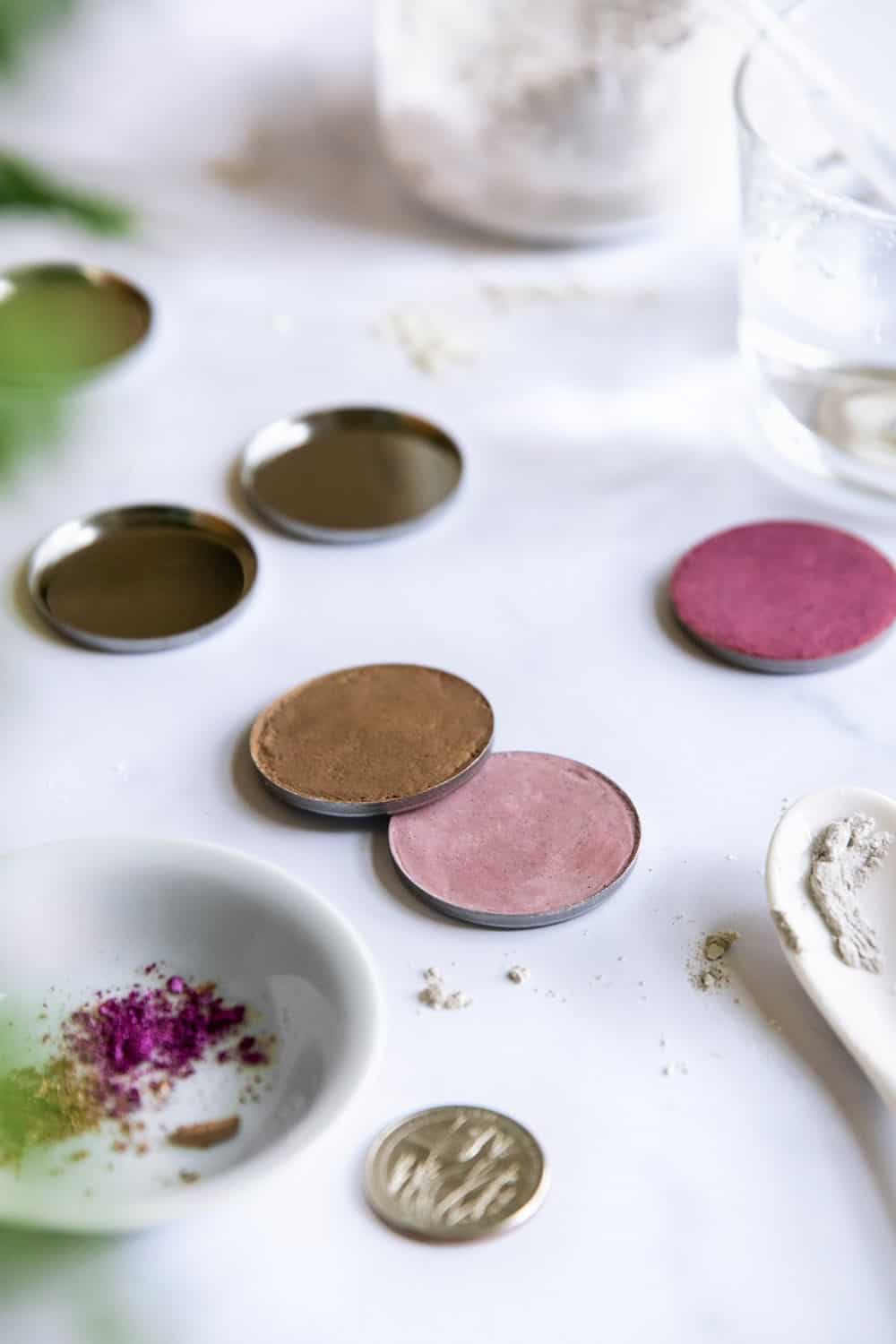
Turn your loose powder into pressed eye shadow with just a few extra tools:
- Coconut oil - For pressed eye shadow, we use coconut oil because it hardens at room temperature without drying out the powder.
- Vodka or rubbing alcohol — This makes it easier to press the eye shadow into a cosmetic pan.
- Eye shadow pan — These are perfect for pressed shadow, blush, or powders.
Usage
Before using around the eyes, test the eye shadow on a small patch of skin on the inner wrist, and always avoid using any known allergens.
To apply, use an eye shadow brush or your fingertip to pick up a small amount of the mixture. Apply it to your eyelids and blend as desired.
Storage
This eye shadow is best stored in a small makeup jar with a sifter. The sifter will help keep your eye shadow from clumping while also ensuring that you don't accidentally spill the powder everywhere if you drop or bump it.
If your mineral clay eye shadow does clump eventually, simply use a mortar and pestle to break it up, then put it back in the jar. Stored in a cool, dry place, it should last up to 6 months.
Note that pressed eye shadows can be more prone to breaking compared to loose eyeshadows, so handle them with care.
Use homemade makeup remover or DIY wipes when it's time to remove your makeup.
Top tip
Don't be afraid to explore different natural ingredients to make your own personalized eye shadow shades! It's not an exact science, so keep adjusting the quantities of each ingredient until you find a color intensity that you like.
FAQ
If you prefer, you can leave out the bentonite clay altogether and just use arrowroot starch as the base. Organic cornstarch would also work.
Yep! Use whichever carrier oil you like. Just make sure to test it on your inner wrist area first to check for possible skin and eye issues.
As long as you don't see any changes in the consistency (such as clumping) and you keep it clean (I recommend using a sifter jar to prevent contamination), your mineral clay eyeshadow should last 4–6 months.
Try white kaolin clay (1:1 in place of bentonite clay) and arrowroot starch as the base. Then add a pinch of whichever pigment powder you like for color. You can also add some white mica powder for a soft shimmer.
Yes! Start with the bentonite clay and arrowroot starch base, then add pink pigments for blush or skin tone pigments for a face powder. I usually mix different shades of clay (this company makes a ton of skin-friendly shades) until I get a color that most closely matches my skin tone.
Eye care
More DIY recipes for your eyes:
How to Make Mineral Clay Eye Shadow (Loose or Pressed Versions)
Equipment
- Small bowl and spoon
- Small jar or empty eye shadow pans or compact
- Pressing tool (can be a coin or the back of a spoon)
- Tissue or paper towel
Materials
Loose Eye Shadow
- ½ teaspoon arrowroot starch
- ½ teaspoon bentonite clay
- ground ginger, cocoa powder, ground cinnamon, or ground nutmeg (enough to reach the desired color)
- 2–3 drops almond oil or jojoba oil
- Experiment with different colored powders and ratios until you have reached your desired tints, using ingredients such as activated charcoal, spirulina, beet root powder, or mica powders.
Pressed Eye Shadow
- 1 tablespoon bentonite clay
- 1 teaspoon arrowroot starch
- ⅛ teaspoon coconut oil (adjust as needed)
- ¼ teaspoon rubbing alcohol or vodka (adjust as needed for desired consistency)
- ¼–½ teaspoon powdered pigments
Instructions
Loose Eye Shadow
- Add the arrowroot starch and bentonite clay to a small bowl and mix well to create your eyeshadow base.
- Mix in desired colors until you have reached a shade that you like.
- Add a few drops of jojoba oil to the mixture, and combine until the powder is no longer dusty but becomes soft and sticks together slightly.
- Apply to well-moisturized skin. Jojoba oil may not only feel soothing on the skin, but it also has the extra benefit of adding back moisture and decreasing redness.
Pressed Eye Shadow
- In a small mixing bowl, combine the bentonite clay and arrowroot starch. Mix well to ensure they are thoroughly blended.
- Add the coconut oil to the dry mixture and stir until it forms a crumbly texture.
- Gradually add the rubbing alcohol or vodka, a few drops at a time. Mix well after each addition until the mixture has a damp, moldable consistency. It should be moist but not overly wet.
- Add the natural pigments to the mixture, starting with 1 teaspoon. Mix thoroughly to evenly distribute the color. If you desire a more intense shade, add more pigments as needed.
- Once the mixture is well blended, transfer it to an empty eyeshadow pan or compact. Use the back of a spoon or pressing tool to press the mixture firmly into the pan, ensuring it is evenly distributed.
- Place a tissue or paper towel on top of the pressed eyeshadow and apply pressure with your pressing tool to remove any excess moisture. This step helps to compact the eyeshadow and remove any remaining alcohol or moisture.
References
Williams LB, et al. Evaluation of the medicinal use of clay minerals as antibacterial agents. Int Geol Rev. 2010.
Moosavi M. Bentonite clay as a natural remedy: a brief review. Iran J Public Health. 2017.

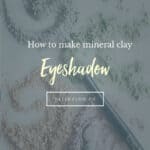
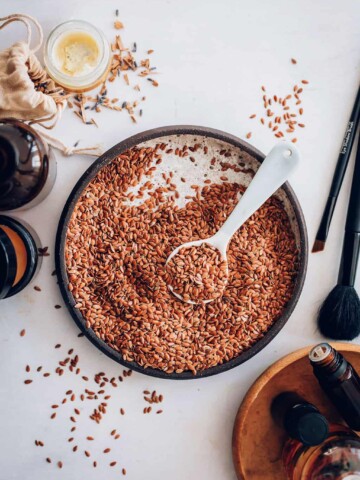
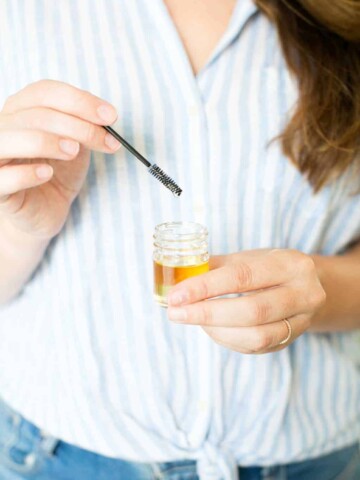
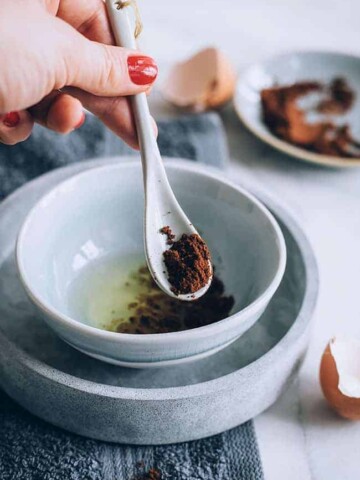
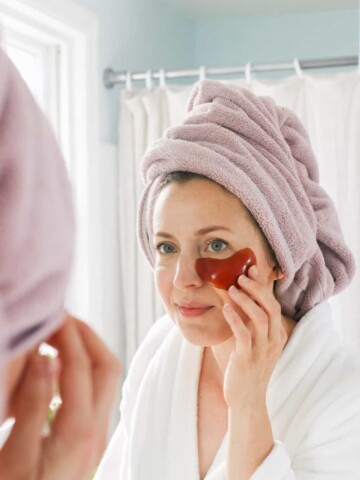
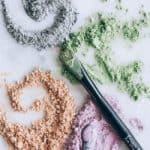
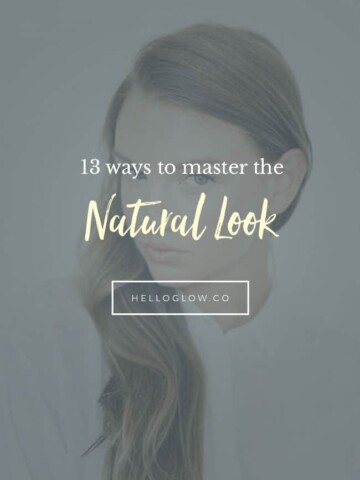
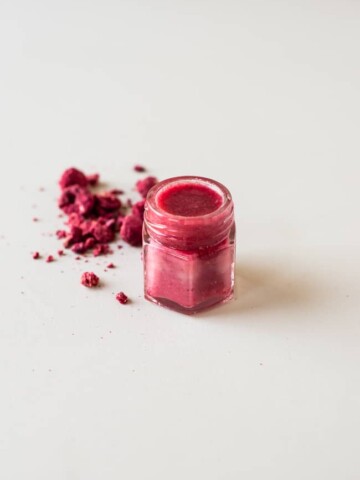
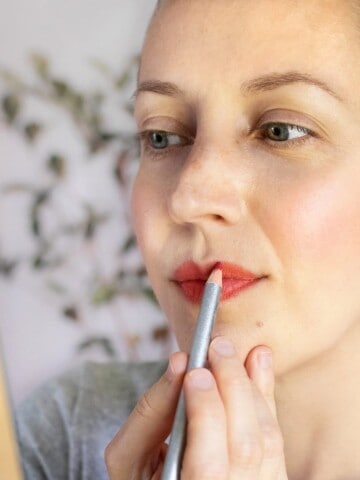

Bluerthanablueberry says
Could you use anything instead of bentonite clay?
Sapphyreopal5 says
Can grapeseed oil be used instead of almond oil?
Kelly Picarsic says
Do you know what the shelf-life for this product is? It looks lovely - can't wait to try it!!
Yolanda says
I'm looking to make a brighting light eye shadow. Any ideas for that? Thanks
Natasha says
I suspect my skin is too sensitive to have cinnamon or ginger near my eyes, but I could certainly handle some delicious smelling cocoa on my face! Thank you for the awesome idea.
Laura says
I'm exited to try this- any reason why this wouldn't work as a face powder too? Thanks
Melissa Granderson says
It does work as a face powder! I used cocoa and cinnamon for a loverly rich shade I can never find in stores. I added non nano zinc oxide powder for uv ray protection.